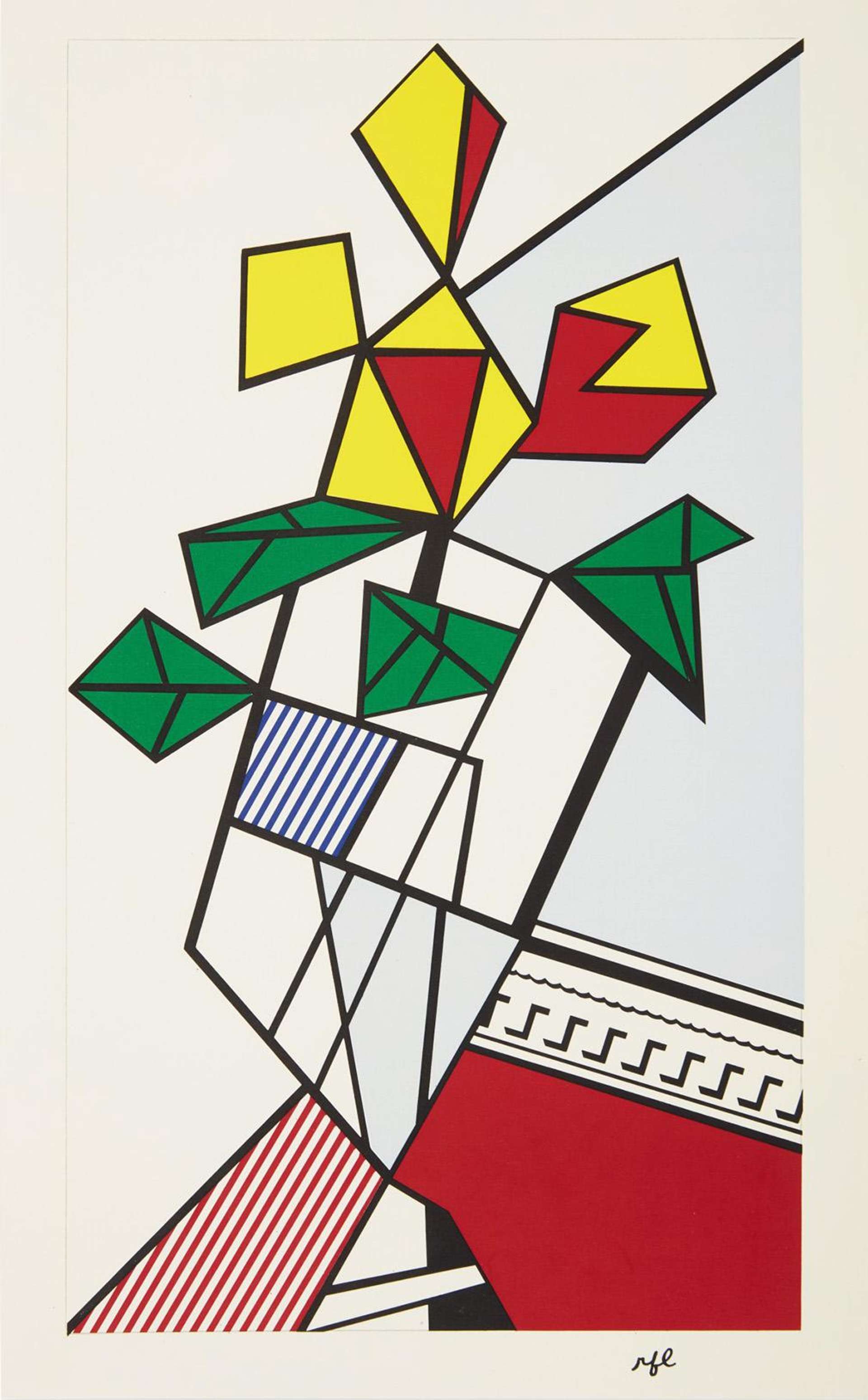
Flowers

Flowers
Signed Print
Roy Lichtenstein
£2,550-£3,850Value
Indicator
$4,950-$7,500 Value Indicator
$4,400-$6,500 Value Indicator
¥23,000-¥35,000 Value Indicator
€3,000-€4,500 Value Indicator
$25,000-$40,000 Value Indicator
¥480,000-¥730,000 Value Indicator
$3,250-$4,900 Value Indicator
AAGR (5 years) This estimate blends recent public auction records with our own private sale data and network demand.
There aren't enough data points on this work for a comprehensive result. Please speak to a specialist by making an enquiry.
Medium: Screenprint
Edition size: 380
Year: 1973
Size: H 41cm x W 25cm
Signed: Yes
Format: Signed Print
TradingFloor
MyPortfolio
Your collection tracked in real time.
Build your portfolio, manage valuations, view return against your collection and watch works you're looking for.
Track auction value trend
Auction Results
| Auction Date | Auction House | Artwork | Hammer Price | Return to Seller | Buyer Paid |
|---|---|---|---|---|---|
| Sotheby's London - United Kingdom | Flowers - Signed Print | ||||
| April 2022 | Wright - United States | Flowers - Signed Print | |||
| December 2021 | Sotheby's New York - United States | Flowers - Signed Print | |||
| March 2021 | Galerie Kornfeld - Germany | Flowers - Signed Print | |||
| February 2021 | Wright - United States | Flowers - Signed Print | |||
| June 2020 | Germann Auctions - Switzerland | Flowers - Signed Print | |||
| June 2020 | Germann Auctions - Switzerland | Flowers - Signed Print |
Meaning & Analysis
Roy Lichtenstein’s Flowers from 1973 manifests a colourful cubist excursion into the diverse history of the still life genre. This bright collage of shapes is predicated on the aesthetic legacies of 20th century modern masters.
Lichtenstein embraces the decorative qualities of still lifes but renders his print according to a pronounced commercial aesthetic. The work is self-referential, incorporating the enlarged architectural fragments of the artist’s Entablatures as its backdrop. The print also serves as the inspiration for Lichtenstein’s subsequent Six Still Lifes of 1974.
Flowers employs an airy composition, presenting a modernised and unpolished version of a classical still life painting. The print primarily expands the meaning behind traditional motifs symbolising the temporality of existence. Lichtenstein situates his cubist rendition of a vase filled with vibrant red and yellow flowers in the middle of the canvas. The work’s fractured background is constituted by a mosaic of brilliant colours and rich patterns.
Bursting with bright stylised elements, Flowers delivers a masterful cartoon impression of its chosen subject matter. The work skillfully integrates the formal qualities of modern art with the mechanical properties of printing. Lichtenstein’s still life initiates a playful conversation between his own art and the creative heritage of the 20th century.